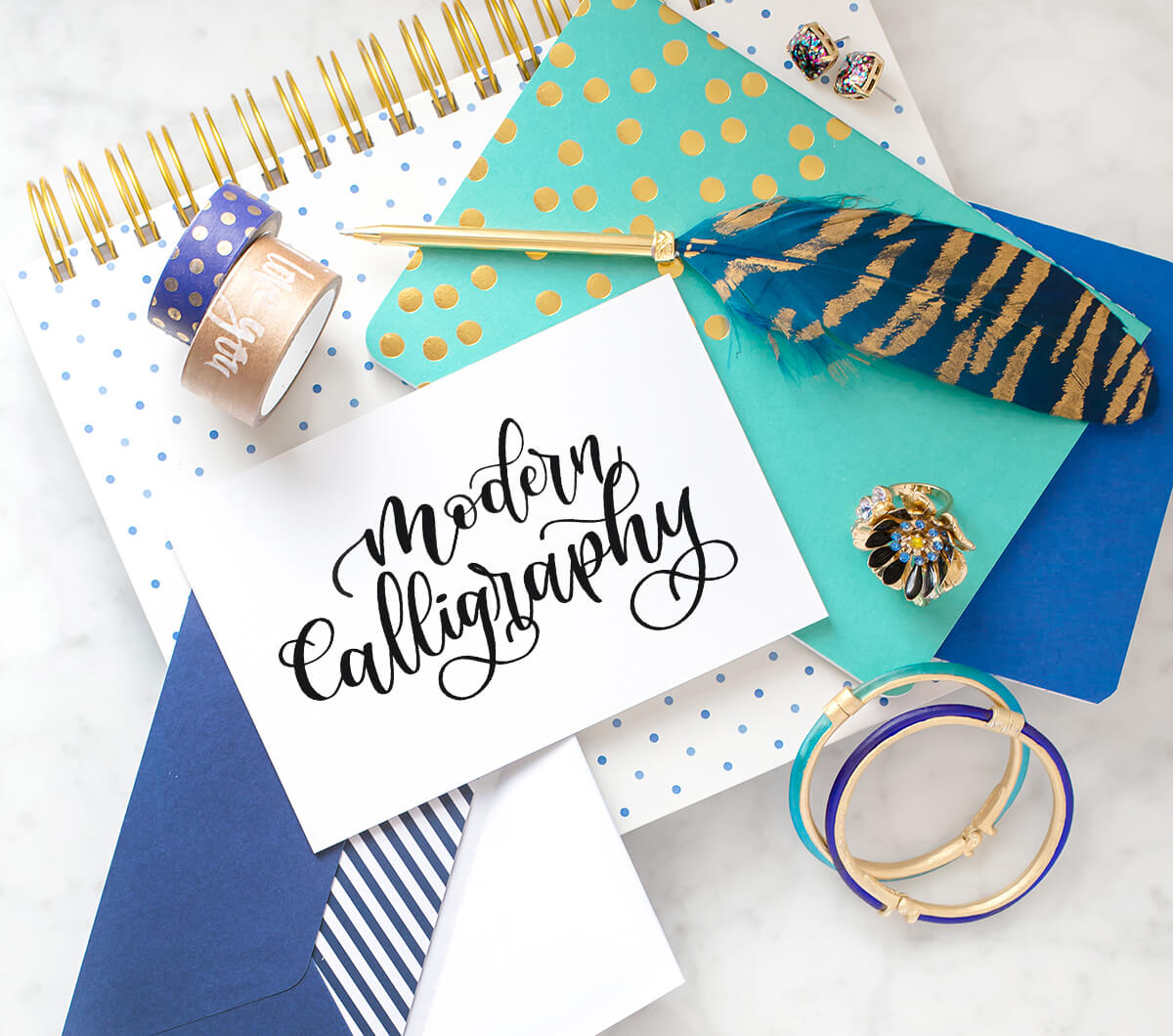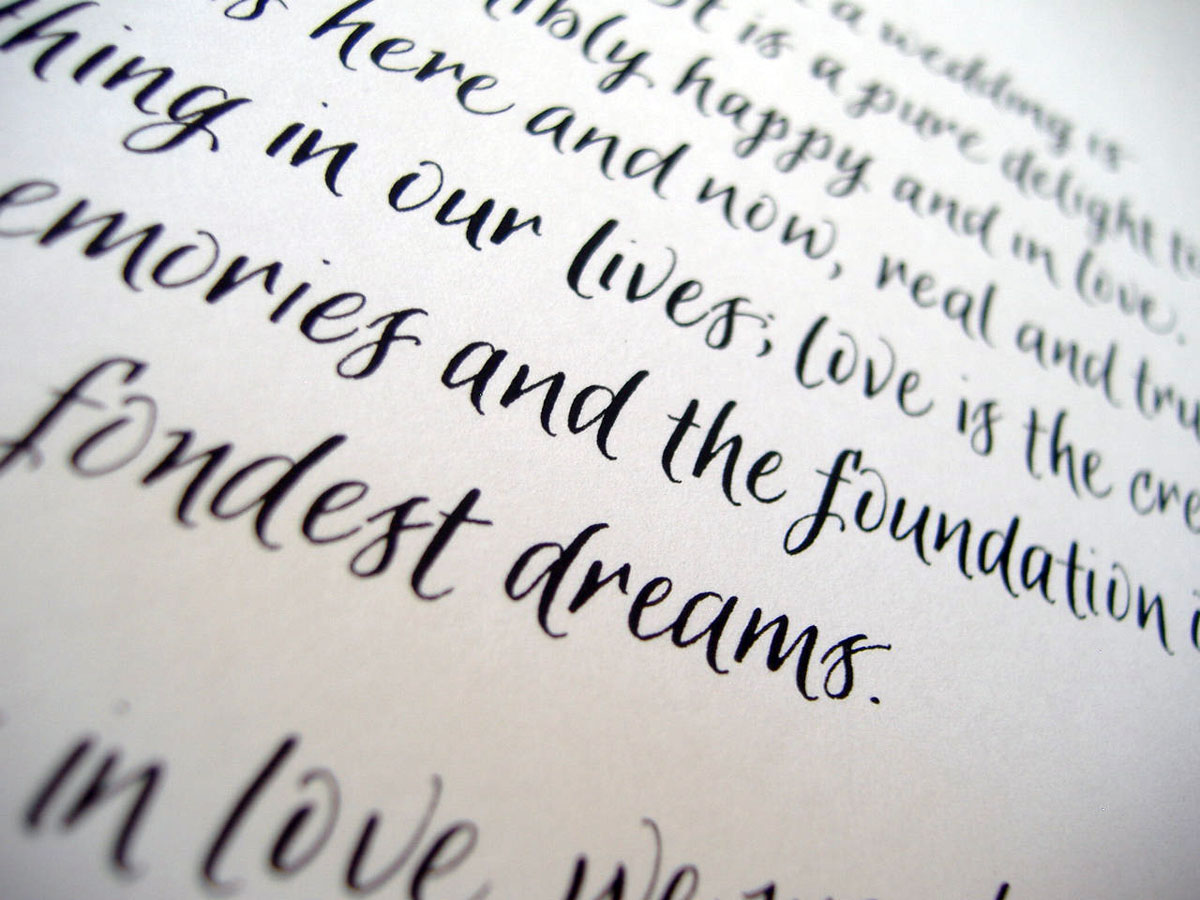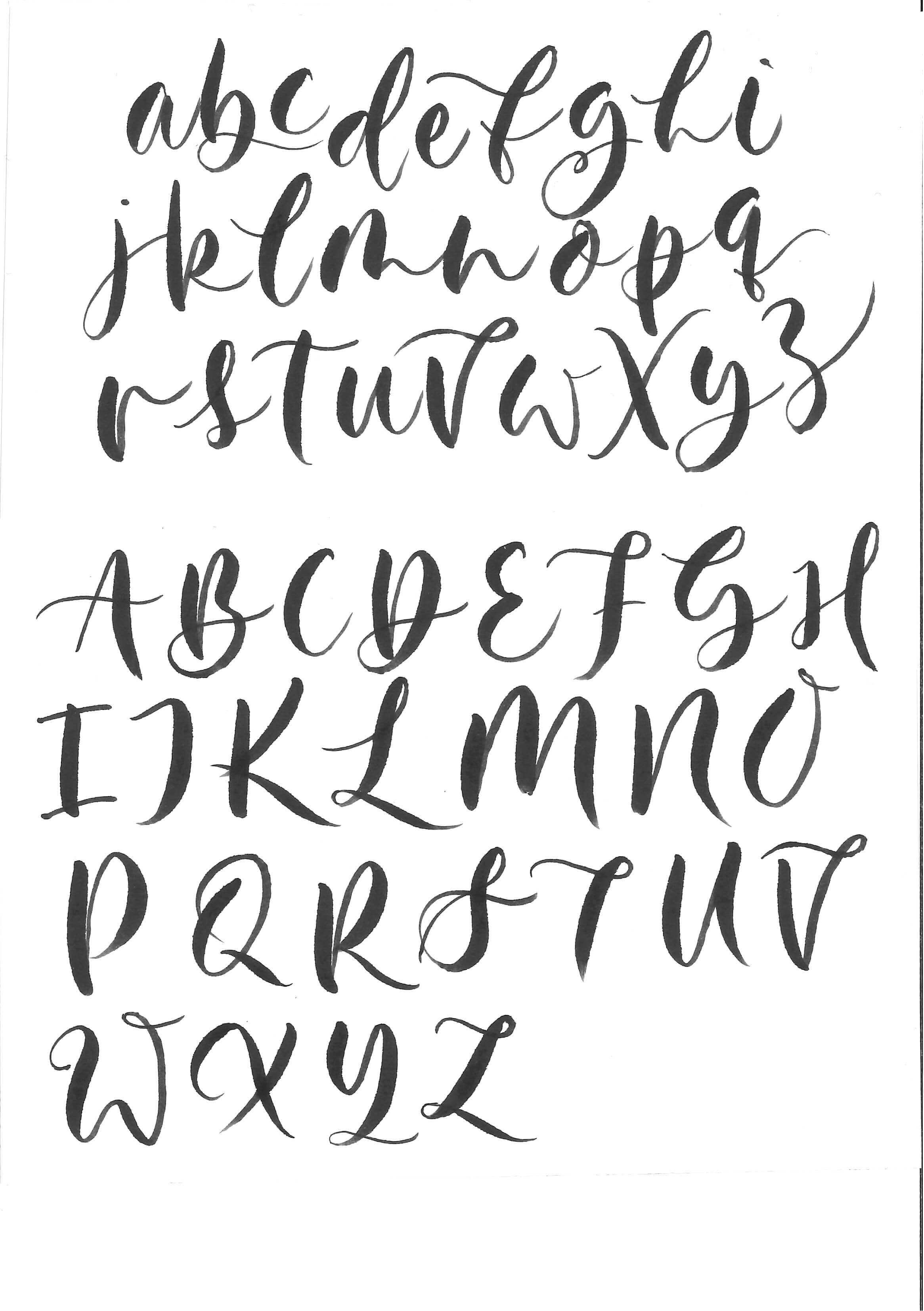Master The Art Of Modern Calligraphy: A Comprehensive Guide
Modern calligraphy has become an increasingly popular form of artistic expression in recent years. It combines the elegance of traditional calligraphy with a contemporary twist, making it accessible to both beginners and experienced artists. Whether you're looking to enhance your handwriting skills or create stunning designs for special occasions, modern calligraphy offers endless possibilities.
Calligraphy, which dates back thousands of years, has evolved into a versatile and dynamic art form. Modern calligraphy, in particular, embraces creativity and personal style, allowing artists to experiment with different tools, techniques, and mediums. This guide will take you through everything you need to know about modern calligraphy, from its history and tools to tips and techniques for mastering this beautiful art.
By the end of this article, you'll have a deeper understanding of modern calligraphy and how to incorporate it into your creative projects. Whether you're a beginner or looking to refine your skills, this comprehensive guide will provide you with valuable insights and practical advice to help you succeed.
Read also:Lisa Bonet Vater A Comprehensive Exploration Of Her Life Career And Legacy
Table of Contents
- The History of Modern Calligraphy
- Essential Tools for Modern Calligraphy
- Basic Techniques in Modern Calligraphy
- Exploring Different Styles of Modern Calligraphy
- Creative Projects Using Modern Calligraphy
- Tips for Improving Your Modern Calligraphy Skills
- Digital Modern Calligraphy
- Building a Business with Modern Calligraphy
- Joining the Modern Calligraphy Community
- The Future of Modern Calligraphy
The History of Modern Calligraphy
Calligraphy has a rich history that spans across cultures and centuries. From ancient scripts to contemporary designs, the art of beautiful writing has evolved significantly. Modern calligraphy, as we know it today, emerged in the late 20th century as artists began to experiment with traditional techniques and incorporate new styles. This section explores the origins of modern calligraphy and its development over time.
According to a study published by the Journal of Art History, the rise of modern calligraphy coincided with the growing interest in handmade crafts and personalized art. Artists began to combine traditional tools like dip pens with modern materials such as brush markers, creating a unique blend of old and new. This fusion of techniques allowed calligraphers to express their individuality while maintaining the essence of classic calligraphy.
How Modern Calligraphy Differs from Traditional Calligraphy
While both modern and traditional calligraphy emphasize beautiful letterforms, they differ in style and approach. Traditional calligraphy adheres strictly to specific rules and scripts, whereas modern calligraphy encourages creativity and personal expression. Here are some key differences:
- Modern calligraphy often uses unconventional tools like brush pens and markers.
- It incorporates a wider variety of scripts and styles, including cursive, block letters, and mixed media.
- Artists focus on individuality rather than strict adherence to traditional rules.
Essential Tools for Modern Calligraphy
Having the right tools is crucial for mastering modern calligraphy. Whether you're just starting out or looking to expand your collection, understanding the different options available will help you choose the best tools for your needs. Below is a list of essential tools every modern calligrapher should have:
Types of Pens and Markers
- Dip Pens: Ideal for creating bold, expressive strokes.
- Brush Pens: Versatile and easy to use for beginners.
- Fountain Pens: Perfect for practicing traditional techniques.
Research conducted by the Calligraphy Association of North America suggests that brush pens are the most popular choice among beginners due to their ease of use and affordability. However, experienced artists often prefer dip pens for their ability to produce dynamic line variations.
Basic Techniques in Modern Calligraphy
Mastering the basic techniques of modern calligraphy is essential for achieving consistent and beautiful letterforms. This section covers fundamental skills such as pen control, stroke variations, and letter spacing. By practicing these techniques regularly, you'll develop the muscle memory needed to create stunning calligraphy pieces.
Read also:Charlie Austin The Rising Star Of Football And His Remarkable Journey
Key Techniques to Practice
- Pressure Control: Applying varying pressure to create thick and thin strokes.
- Connecting Letters: Ensuring smooth transitions between letters for fluid cursive writing.
- Kerning: Adjusting the spacing between letters for balanced and aesthetically pleasing designs.
Exploring Different Styles of Modern Calligraphy
One of the most exciting aspects of modern calligraphy is the wide range of styles you can explore. From classic copperplate to whimsical brush lettering, each style offers unique challenges and opportunities for creative expression. In this section, we'll delve into some of the most popular modern calligraphy styles and provide examples of how they can be used in various projects.
Popular Modern Calligraphy Styles
- Copperplate: Known for its elegant, formal appearance.
- Brush Lettering: Characterized by bold, expressive strokes.
- Gothic: Featuring dramatic contrasts and angular lines.
Creative Projects Using Modern Calligraphy
Once you've mastered the basics of modern calligraphy, it's time to put your skills into practice. There are countless ways to incorporate calligraphy into your creative projects, from designing wedding invitations to creating personalized gifts. Below are some inspiring ideas to get you started:
Ideas for Modern Calligraphy Projects
- Wedding Stationery: Create beautiful invitations, place cards, and thank-you notes.
- Wall Art: Design stunning wall art pieces for your home or office.
- Gift Tags: Add a personal touch to your gifts with custom calligraphy tags.
Tips for Improving Your Modern Calligraphy Skills
Improving your modern calligraphy skills takes practice, patience, and persistence. Here are some tips to help you progress faster and avoid common mistakes:
Practical Tips for Beginners
- Practice consistently, even if it's just for 10-15 minutes a day.
- Start with basic drills to build a strong foundation.
- Seek feedback from experienced calligraphers to identify areas for improvement.
Digital Modern Calligraphy
With the rise of digital tools and software, modern calligraphy has expanded into the digital realm. Artists can now create stunning calligraphy designs using tablets, styluses, and specialized software. This section explores the benefits of digital calligraphy and provides recommendations for tools and resources.
Benefits of Digital Calligraphy
- Flexibility: Easily edit and refine your designs without starting over.
- Portability: Take your calligraphy tools with you wherever you go.
- Collaboration: Share your work with others and collaborate on projects remotely.
Building a Business with Modern Calligraphy
Many modern calligraphers have successfully turned their passion into a profitable business. From offering custom services to teaching workshops, there are numerous opportunities to monetize your skills. This section provides guidance on how to start and grow a calligraphy business.
Steps to Start a Calligraphy Business
- Define your niche and target audience.
- Build a strong online presence through social media and a professional website.
- Invest in high-quality tools and materials to produce exceptional work.
Joining the Modern Calligraphy Community
Becoming part of the modern calligraphy community can be incredibly rewarding. Whether you join online forums, attend workshops, or participate in exhibitions, connecting with fellow calligraphers will inspire and motivate you to continue growing as an artist. This section highlights some of the best ways to engage with the community.
Ways to Connect with Other Calligraphers
- Join social media groups dedicated to calligraphy.
- Attend local or international calligraphy events and workshops.
- Participate in calligraphy challenges and competitions.
The Future of Modern Calligraphy
As technology continues to advance, the future of modern calligraphy looks bright. Artists will have access to new tools and platforms that will enable them to push the boundaries of creativity even further. Despite these advancements, the essence of calligraphy—its ability to convey beauty and emotion through handwritten art—will remain timeless.
According to a report by the International Calligraphy Association, the demand for personalized and handmade calligraphy is expected to grow in the coming years, driven by increasing consumer interest in unique and meaningful experiences.
Conclusion
In conclusion, modern calligraphy offers endless possibilities for artistic expression and personal growth. By understanding its history, mastering essential techniques, and exploring different styles, you can create stunning works of art that reflect your individuality. Whether you choose to pursue calligraphy as a hobby or a career, the skills and knowledge gained from this guide will serve as a solid foundation for your journey.
We invite you to share your thoughts and experiences in the comments below. Have you tried modern calligraphy? What challenges have you faced, and how did you overcome them? Don't forget to explore our other articles for more inspiration and tips on mastering the art of modern calligraphy.


